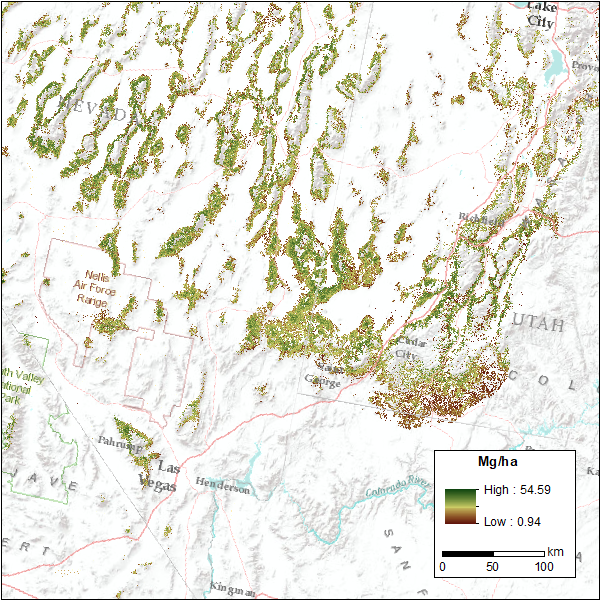CMS: Pinyon-Juniper Forest Live Aboveground Biomass, Great Basin, USA, 2000-2016
This dataset from the Carbon Monitoring System (CMS) provides annual maps of live aboveground tree biomass (Mg/ha) for pinyon-juniper forests across the Great Basin of the Western USA for the years 2000-2016 at a spatial resolution of 30 meters. Biomass estimates are limited to areas of the Great Basin defined as a pinyon-juniper ecosystem type by the 2016 Landfire Existing Vegetation Type map. The estimates of biomass were based on a linear relationship with pinyon-juniper canopy cover and crown-based allometrics developed from field data in Nevada and Idaho. Canopy cover was estimated from remote sensing by using annual composites of Landsat imagery, which were temporally segmented with the LandTrendr algorithm, along with biologically-relevant climate variables, and topographic indices in a Random Forest regression model. Models of canopy cover were trained from semi-automatic extraction of tree crowns from 2011 - 2013 high resolution imagery (1 m) from the National Agriculture Imagery Program, which were validated with photo interpretation. Maps of the standard deviation of biomass estimates from decision trees in the Random Forest model are provided as an indicator of uncertainty. Biomass estimates were calibrated to estimates from the Forest Inventory and Analysis program (FIA) on an annual basis and corrections applied.
NASA's CMS program is designed to make significant contributions in characterizing, quantifying, understanding, and predicting the evolution of global carbon sources and sinks through improved monitoring of carbon stocks and fluxes. See all ORNL DAAC data from the CMS.
Data Citation: Filippelli, S.K., M.J. Falkowski, A.T. Hudak, and P.A. Fekety. 2020. CMS: Pinyon-Juniper Forest Live Aboveground Biomass, Great Basin, USA, 2000-2016. ORNL DAAC, Oak Ridge, Tennessee, USA. https://doi.org/10.3334/ORNLDAAC/1755

